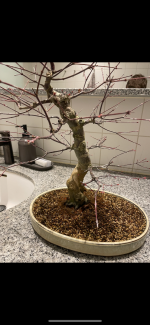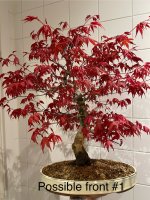Noulinator
Sapling
Any ideas how to fix this reverse taper without doing an airlayer?
Grafting seedlings, scarring or grafting a sacrifice branch below?
I got the tree fairly cheap and I intend to clean up the bulges on the trunk this year and do some branch selection and wiring.
Seems like a fun project.
Grafting seedlings, scarring or grafting a sacrifice branch below?
I got the tree fairly cheap and I intend to clean up the bulges on the trunk this year and do some branch selection and wiring.
Seems like a fun project.









